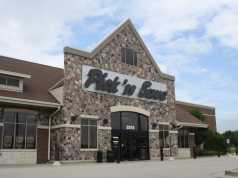Madison – August 21, 2012 – (RealEstateRama) — U.S. Environmental Protection Agency Regional Administrator Susan Hedman today announced EPA brownfields grants totaling $800,000 to clean up contaminated properties in Madison, Wisconsin.
Hedman joined Wisconsin Department of Natural Resources Secretary Cathy Stepp and Madison Mayor Paul Soglin at a brownfield site on East Washington Avenue for the announcement. The City will use these funds to assess and clean up contaminated former industrial and commercial properties.
“EPA brownfield grants help to revitalize neighborhoods and create jobs,” said EPA Regional Administrator Susan Hedman. “Cleaning up contaminated brownfield sites protects public health and fuels economic development.”
“As the city works to develop brownfield sites throughout the Isthmus area, a partnership with the federal and state government is very instrumental,” said Mayor Soglin. “I am so pleased that the Environmental Protection Agency and Wisconsin Department of Natural Resources understand the importance of these projects, and I welcome EPA Regional Administrator Susan Hedman to Madison.”
“It’s easy to see how these brownfield projects are win-wins for everyone involved,” said DNR Secretary Cathy Stepp. “We’re excited to watch this project grow to completion, and with DNR’s commitment to environmental cleanup and economic revitalization, we look forward to continued success in the brownfields arena.”
The grants include:
· $400,000 to clean up a former automotive sales and repair site on East Washington Avenue. The City will provide another $80,000 toward the cleanup.
· $400,000 to conduct environmental assessments and plan future cleanups in the surrounding area.
The City of Madison previously received a $400,000 cleanup grant for the East Washington property from WDNR’s brownfield revolving loan program, which is also funded by EPA.
There are an estimated 450,000 brownfield sites in the United States. EPA brownfield grants have been used to clean up over 700 contaminated sites and to assess over 18,000 properties, primarily in low-income areas disproportionately impacted by environmental contamination.
See list of all EPA brownfields grants by state: http://cfpub.epa.gov/bf_factsheets/
More information on EPA’s brownfields program: www.epa.gov/brownfields/
More information on brownfields success stories: www.epa.gov/brownfields/success/index.htm
Contact:
Francisco Arcaute, 312-886-7613, 312-898-2042 Cell, arcaute.francisco (at) epa (dot) gov








